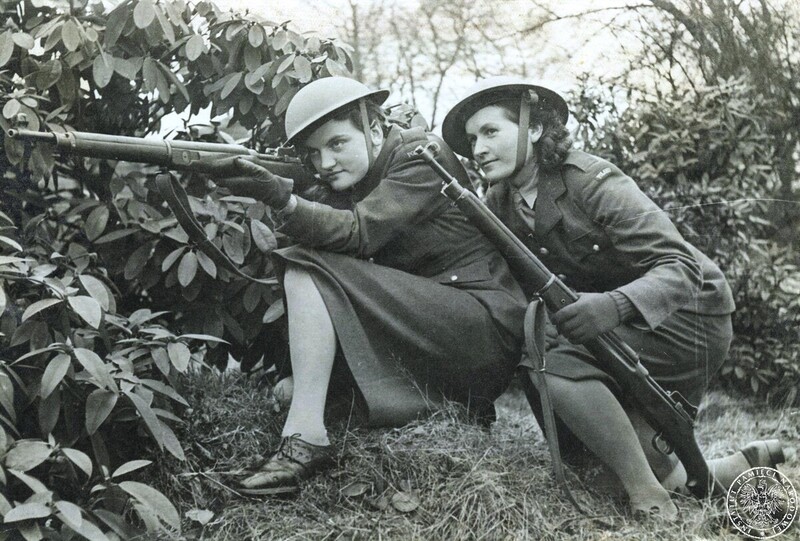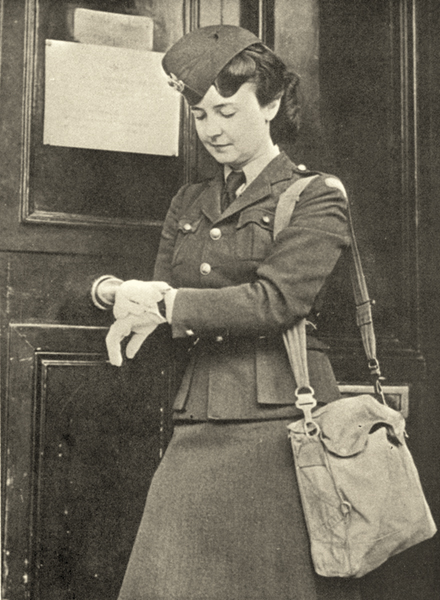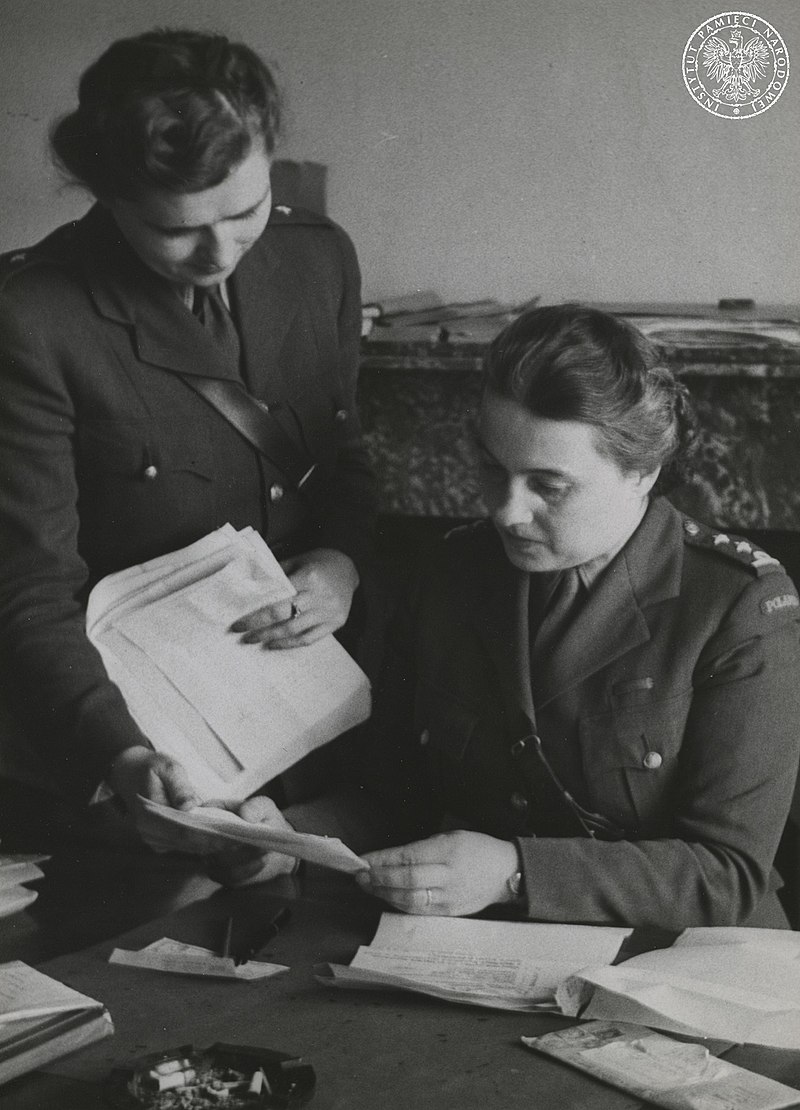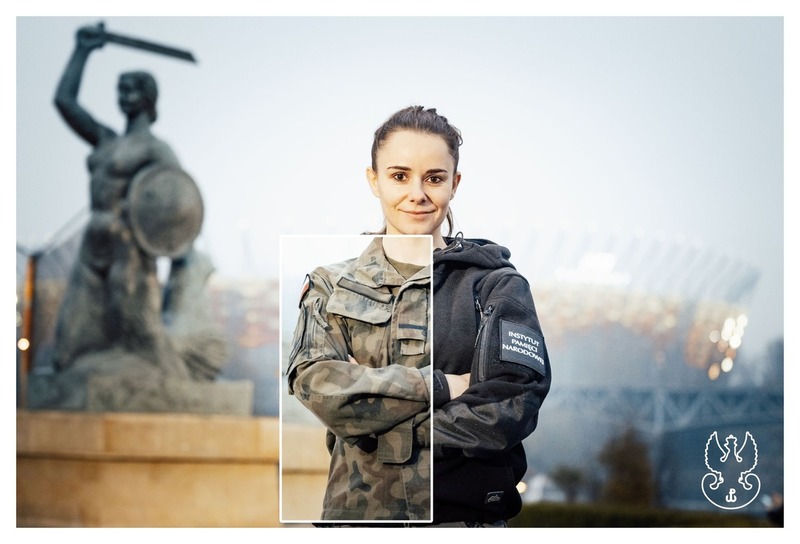The first order to create the women's formations was signed by General Marian Kukiel in February 1940. Women entering in the Polish Armed Forces were to replace men in those positions where women's work is desirable. Women's formations were subordinate to the Ministry of Military Affairs, and the access was voluntary. Zofia Leśniowska became the first commander with Maria Frankowska as her deputy. A special committee was established to specify detailed tasks, and develop statutes and rules for the organization of women's units. The German attack on France interrupted this process.
The order to establish the Women's Auxiliary Service (Polish: Pomocnicza Służba Kobiet (PSK), was issued in 1941 by Gen. Władysław Anders, while creating the Polish Armed Forces in the East. Women volunteered spontaneously to help the army by working wherever they could be useful — in kitchens, laundries, administration, hospitals and infirmaries or caring for children.
Female volunteers performing sanitary, cultural-educational and administrative duties were required to have a high school education while those who were to serve as chauffeurs and work in kitchens, canteens or day-care centers were to have finished elementary school.
During the evacuation from the USSR 1,159 female volunteers left joining the Polish Army. At the end of June 1942, the Command of the Polish Army in the Middle East issued an order which stated that all women arriving from the USSR in Palestine, aged 17 to 45 inclusive, are to be considered the PSK volunteers. In September 1942, the women's units counted around 4,000 volunteers.
In the beginning of 1940, the Women's Auxiliary Military Service camp was attached to the 1st Polish Corps in Scotland which operated in Great Britain, with Maria Leśniak as its manager. This camp was stationed at Bantaskin House, followed by Falkirk, Galeon and North Berwick. The camp consisted of three platoons: training, reserve and transitional. Starting in 1942, transports of female volunteers from the Middle East, evacuated with the General Anders Army from the USSR, were sent to Britain. A Marching Company was formed out of the first 200 women, who were assigned to serve on motor transports. Some of them also joined the units of the 2nd Polish Corps.
In July 1944, the Minister of National Defence reorganized the PSK by establishing three new units: Women's Army Auxiliary Service (WAAS) (Pomocnicza Wojskowa Służba Kobiet, PWSK), Women's Air Force Auxiliary Service (WAFAS) (Pomocnicza Lotnicza Służba Kobiet, PLSK) and Women's Naval Auxiliary Service (WNAS) (Pomocnicza Morska Służba Kobiet, PMSK)
After the end of World War II, women were demobilized on the same basis as men serving in the Polish Armed Forces.
Today, more than 9,000 Polish women serve in the Armed Forces. Over 3,500 belong to the Territorial Defence Force (Wojska Obrony Terytorialnej – WOT) which is the fifth military branch of the Polish Armed Forces, following the Land Forces, Air Force, Navy and Special Forces. WOT consists of professional soldiers and part-time soldiers – volunteers, who join military service in order to enhance national defence capabilities and protect their local communities.
See also: IPN and WOT Press conference.



